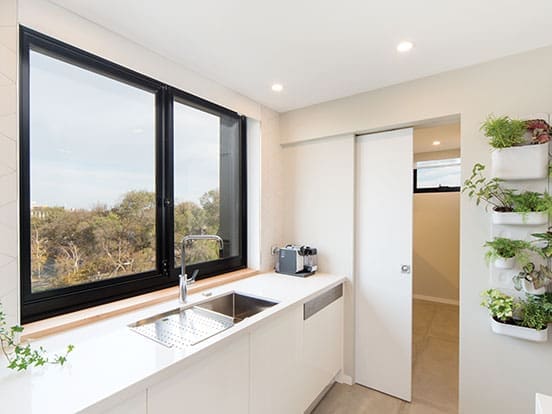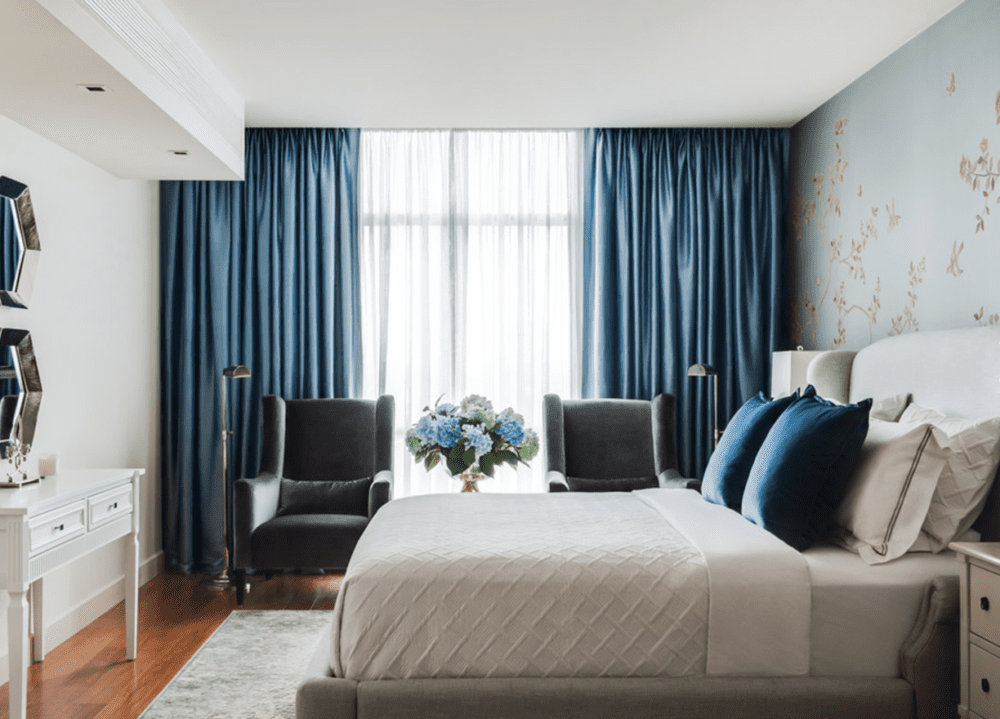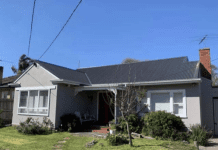Lately, many of you have been sharing your window woes with me so I’m revisiting a blog post I wrote when we were building our house and turning it into a tips article.
You see, windows are really, really expensive! Trying to find nice windows that don’t cost a motza proved to be near impossible. Sure, if budget didn’t come into the equation, I could have picked windows at the first showroom we visited. Their commercial range of doors and windows instantly stole my heart and I could have signed on the dotted line then and there… But when the quote came back and it was close to a quarter of our total build budget, we had to find another option.
I hope these tips on how to select windows for your home will help you avoid the headaches I endured!
Related article: The best window coverings to insulate your home
Related article: Gina’s home: My new contemporary and low maintenance window coverings
How to select windows for your home
Shop around
We shopped around at almost 30 window suppliers. Ok, I lie, it was only 10 but felt like 100! It gave us a good sense of what options are available and how they vary in price.
We went to the most basic of showrooms to the most luxe. I didn’t just look at their ranges and leave — we spoke with the staff to learn about their products and at the promising places, left our house plans for them to provide a detailed quote.

Deciding on window types
When selecting windows for your home, one of the biggest factors that will influence both design and budget is the type of window you choose. Each style has its pros and cons, and the hardware involved can make a big difference to the overall cost.
At the most affordable end of the spectrum are fixed windows — panes of glass that don’t open and therefore require no additional mechanisms. Next come sliding windows, which are relatively cost-effective thanks to their simple track system.
Moving up in price, awning windows (hinged at the top and opening outward) and hopper windows (hinged at the bottom) offer more ventilation but need extra hardware. Casement windows, which open outward like a door, and double-hung windows, where both top and bottom sashes slide vertically, sit at the higher end of the price scale because of their more complex hardware. Specialty options like louvres, pivot windows or high-performance European systems are usually the most expensive.

Balancing budget and design
Because window choice affects both aesthetics and cost, it’s often worth mixing different types throughout the home. For example, you might splurge on statement windows such as double-hung or casement in living and entertaining areas, while choosing sliding or fixed windows in bedrooms or secondary spaces to keep costs down.
“Use fixed or sliding panes where ventilation isn’t critical, reserve pricier double-hung units for high-traffic areas, and rely on retractable awnings to tame sun and heat without overspending on complex window hardware,” advises the owner of Factory Fast Australia.
This approach ensures you get the look and functionality you want in key areas while staying on budget. By understanding the window price spectrum, you can make informed decisions when selecting windows for your home and avoid unexpected costs.

Look at the specs
A hidden cost we didn’t discover until late in our window saga was the ‘added extras’. These are additional things that were being specified for our glass. We knew we wanted double glazed windows throughout but all these extras that were loaded on — ‘Arg’ (Argon gas), high ‘IGU’s (to this day I still don’t know what that means) and ‘Low E’ — bumped up the price of our quote by thousands.
Once we stripped away these unnecessary extras, we were doing a little happy dance — we found nice windows that were within budget… well, close enough!
Think ahead about window coverings
Something I’ve realised since building our home is that I should have put more thought into how we’ll dress the windows internally and externally. Not all window coverings and window types go hand in hand.
Do you have your heart set on a particular type of window treatment, like floating sheer curtains or plantation shutters? Then be sure to think about this when making your window selections. Some types of windows aren’t as functional with certain window treatments, for example, louver windows with plantation shutters wouldn’t work.
I wish I had given more thought to the type of window coverings I would use and have factored this in while we were building. For example, I’m now installing sheer curtains throughout my home and wish we had allowed for recessed curtain tracks. This is where the ceiling is lower and there’s a hidden recessed area for the curtain track for a cleaner and more luxe look.

Other tips:
- for awning windows, look at the height of the window. If it’s more than 900mm, you may want to consider adding a break so the lower part of the window is a fixed panel and only the top of the window opens. Otherwise you’ll be getting down on your hands and knees to wind up a window from the floor
- for windows in bathrooms or where you may want added privacy, adding window frosting is a good idea
- avoid super narrow and tall sliding windows. It can cause the weight of the window to be off balance and the wheels of the sliding window to be too close together causing the sliding glass panel to tip and become faulty.
Do you have more tips? Add them in the comments below! There you have my account of why selecting windows for our home has been a nightmare. Hopefully I’ve helped save one or two people from hours of hair pulling frustration!







There would be a lot of people in Brisbane thinking about replacing Windows after the recent hail storms here. I’m sure this will help.
Oh no, such crazy weather! I hope you weren’t affected!
Thanks for sharing Gina, a really helpful and informative article. Best of luck they all go to plan from here in!
Thanks Bec. Ahhhh yes, that’s the next scary thing – maybe I shouldn’t have published this until all the windows were installed! Hope I didn’t jinx myself, ha ha 🙂